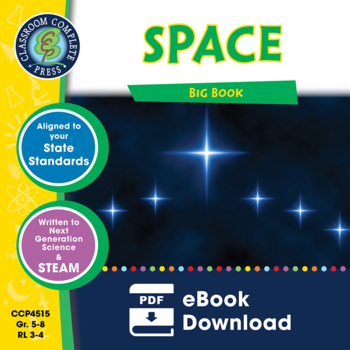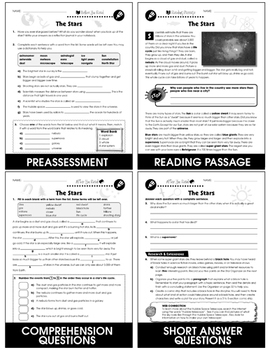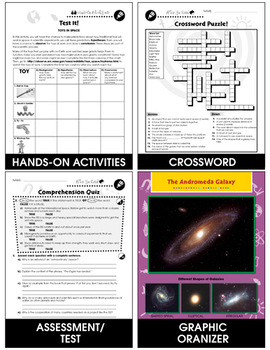Space BIG BOOK - Bundle
- Zip
What educators are saying
Products in this Bundle (3)
Bonus
Description
Get the big picture about the Universe with our Space and Beyond 3-book BUNDLE.
About this Resource:
Start things off in our own backyard with a look at our Solar System. Travel to each of the inner and outer planets. Build a scale model of the solar system, and plan your trip to one of its planets. Next, travel a little further out to look at Galaxies & The Universe. Learn how distance is measured in light years, and how far the next closest star is to Earth. Find out how much you would weigh on the sun, moon and planets. Finally, learn what it's like to live in space with Space Travel & Technology. Blast off into space with manned and unmanned spacecrafts. Learn about life aboard the International Space Station, and predict how different toys would work in space. Each concept is paired with hands-on activities and experiments.
Aligned to the Next Generation State Standards and written to Bloom's Taxonomy and STEAM initiatives, additional crossword, word search, comprehension quiz and answer key are also included.
************************************************************************
View Individual Titles:
►Galaxies & The Universe Gr. 5-8
►Space Travel & Technology Gr. 5-8
************************************************************************
Check out our sister TPT shops:





